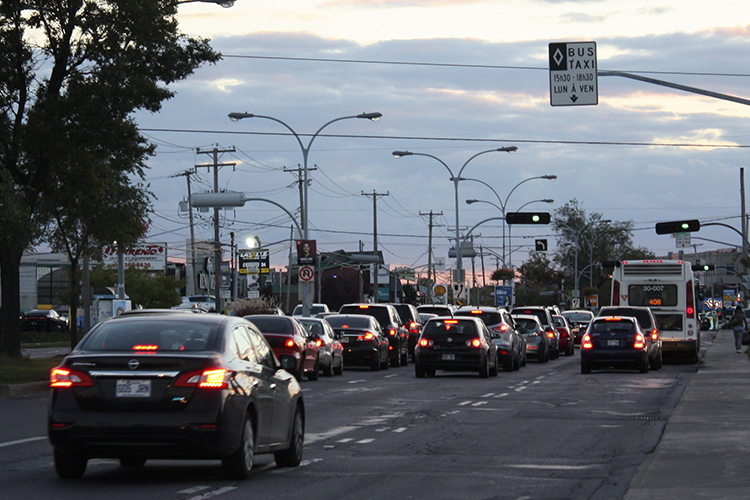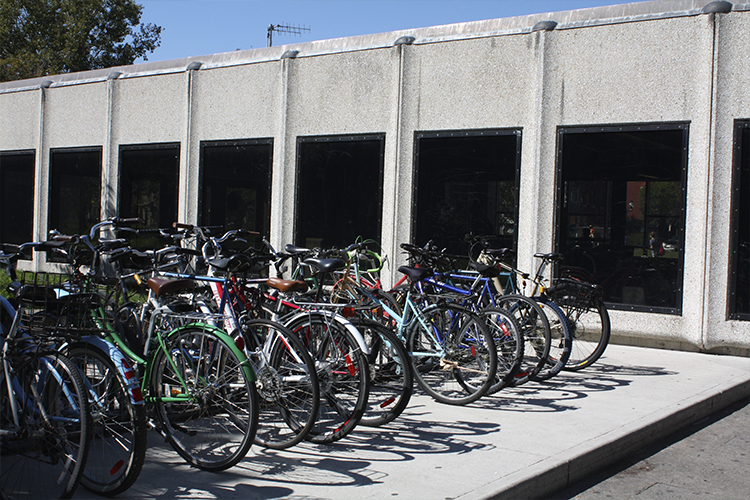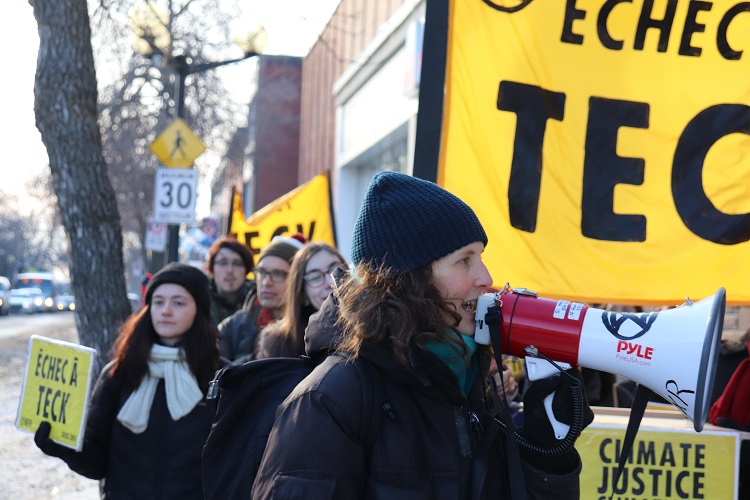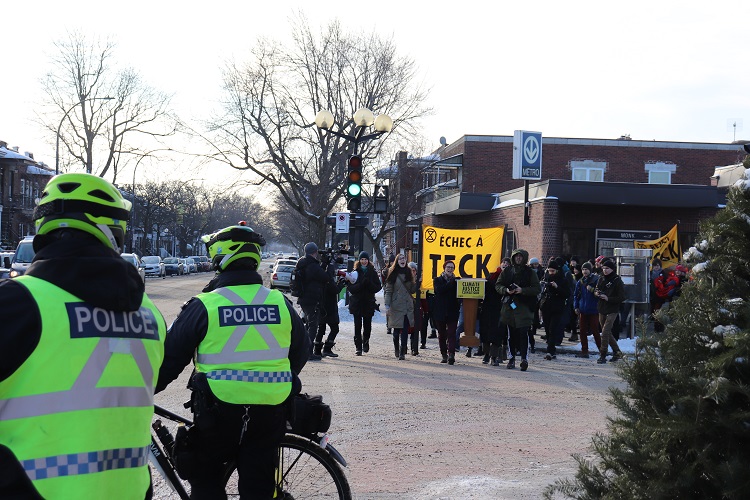BY Tristan McKenna
Emilie Paquin’s face is marvelously expressive. Her air is positive, but when climate change comes up, you can see the uneasiness in her greenish grey eyes.
“We are all linked. There is not enough knowledge on what nature gives us, how we are connected to the seas and the atmosphere,” she says.
Paquin makes sustainable choices and donates to activist causes that she supports. With work hours and a son, she cannot be marching at the scene and carrying protest signs as much as she wishes.
Also worrying about what animals her boy might miss out on, Paquin wonders if his children might end up questioning her about elephants and whales. “I’m 40, I have two masters, and I’ve never heard [about the link between climate change and biodiversity] before, and I’m working in publishing.”
Paquin’s concerns reflect those of a provincial majority.

Bird populations are on the decline in Montreal, in part due to climate change and changes to their habitats due to construction and pollution. Photo by Cristina Sanza.
According to research from the University of Montreal (UDM), 89 per cent of Quebecers believe that the Earth is getting warmer. This places us second in the country, just behind New Brunswick. In regards to believing that we’ll be personally harmed by environmental shifts, Quebec tops the national list.
With about half a million participants last September, Montreal had the largest turnout across the globe for the Greta Thunberg youth march. Downtown streets appeared anthill-esque, especially with the sloped nature of our city carved out from a mountain. However, the public support for environmentalism clashes with new data.
A recent HEC report finds that petroleum use has never been higher in the province. On top of a ten per cent spike in fossil fuel use, the sales of SUVs and other light trucks has broken previous record.

Contrary to what many might think, car use has only decreased by one per cent from 2013 to 2018, according to a Regional Metropolitan Transport Authority (ARTM) report. Photo by Cristina Sanza.
HEC says, “Unless it makes a drastic shift, Quebec will not be able to meet its targets for reducing petroleum product consumption and greenhouse gases emissions by 2030.”
The petroleum findings emerged around the same time as a Regional Metropolitan Transport Authority (ARTM) report. The ARTM found that from 2013 to 2018, car use only decreased by one per cent. Over that five year period, increase in public transport ridership was calculated at four per cent.
“When I think about policy responses to climate change, I can’t actually think of anything that the city is doing to decrease car use. I do not know why you would expect it to go down,” says Damon Matthews, Concordia’s Research Chair in Climate Science and Sustainability. “The cost of public transit has gone up over time.”
Matthews’ research projects that Quebec will heat up at double to triple the global rate.
One of his recent studies uses a region’s greenhouse gas emissions, per teraton of carbon dioxide (Tt C), to predict its temperature changes. The work found that the world’s average temperature increase will be approximately 1.7 C per Tt C. However, for Southern Quebec, temperature is projected to rise by 2.5 C per Tt C. In Northern Quebec, increases were forecasted to be 3.5 C per Tt C.
“In the past few years, we have a new municipal government, and they are pushing bike paths, but in terms of real incentives to not drive cars, there has not been anything,” says Matthews.

While Montreal has made efforts to push the use of bikes to get around the city, some experts say it’s not enough to stop people from also travelling by car. Photo by Cristina Sanza.
Unhappy with his own busing experience, he says public transit needs to be more appealing. He cites the changes in Mont-Tremblant as an example. Buses there were made free last summer and ridership has amped up heavily.
“I think that improving and incentivizing public transit is one of the most important things,” he says.
The city is looking into tackling heavy gas users, like those with SUVs, with costlier parking permits.
Matthews is not sure if these approaches will work. “Higher taxes for SUVs might just make people annoyed,” he says. As an example of how difficult it is to get people to change their habits, he points to the controversy over changing the Camillien-Houde lookout road.
“There was such a fuss over the mountain road,” he says. “The city was just trying to take one place and make it more accessible, but people hated it. That was such a big deal, right? So, it’s really hard to shift.”
Take this short quiz to find out more about Canadians and climate change. Media by Tristan McKenna.
Milan Kona-Mancini, a Canadian Wildlife Federation member says politicians must do more.
“While it isn’t enough, I applaud Plante and her initiative,” he says. “It looks like it’s painted but it’s actually not. So, it’s coated in this green substance that on first look, looks infallible, but upon further inspection, there’s no substance to it.”
Plante has been named Global Ambassador for Local Biodiversity by the Local Governments for Sustainability international network. She is credited for the plans to create a West Island park larger than New York City’s Central Park.
However, Kona-Mancini and other activists blame her for continued plans that threaten green space around Pierre Elliot Trudeau airport. Montreal’s own Silicone Valley, the Technoparc development impacts wetland deemed crucial for local wildlife. Environmentalists say this destruction will be detrimental to already decreasing bird populations Some say it will also increase flooding in the area.
Kona-Mancini also has concerns about the new Réseau électrique métropolitain (REM) light-rail line. He says it may seem beneficial for transit and green space, but the amount of parking lots that will be created are going to counteract any positive impact.
Kona-Mancini’s perspective is in line with Quebec’s Office of Public Hearings on the Environment (BAPE). The BAPE feels that the REM will not only harm the local environment, but the system may only create a slight rise in the popularity of public transit.
With the disconnect between Quebec’s stance on climate change and its actions, groups like Extinction Rebellion are using more radical methods to push for change.

Elze Kephart speaks into a megaphone while leading an Extinction Rebellion protest down Boulevard Monk. Kephart was the main organizer of the event. Photo by Tristan McKenna.
“Our strategy is based on civil disobedience,” says Roman Grégoire, an organizer for Extinction Rebellion. “We are not saying that the other strategies are not effective, they are not fast enough. We have just five years left,” he asserts.
Bundled in a hefty red coat and waiting calmly for everyone to gather before an Extinction Rebellion march, one might think that the slightly older Kate Luthi would be less radical than the majority of 20-somethings surrounding her.

Police are alert as an Extinction Rebellion protest emerges from the Monk metro station. An entourage of SPVM officers on bikes followed the sidewalk marchers down Boulevard Monk. Photo by Tristan McKenna.
“We are prepared to do something pretty radical”, she says. “Something that surprises people and interrupts business as usual…I wish I could tell you what sort of things we have coming.”
The city of Montreal denied commenting on this story.




